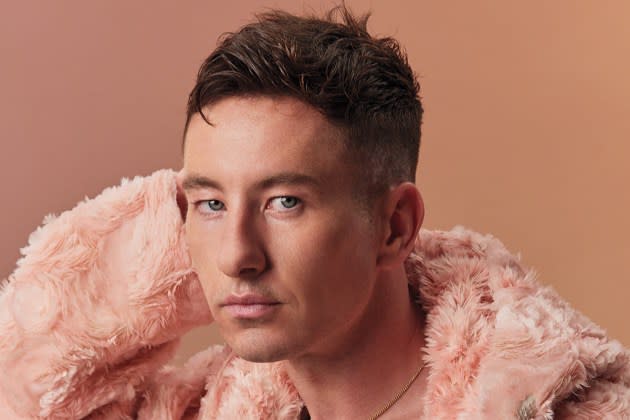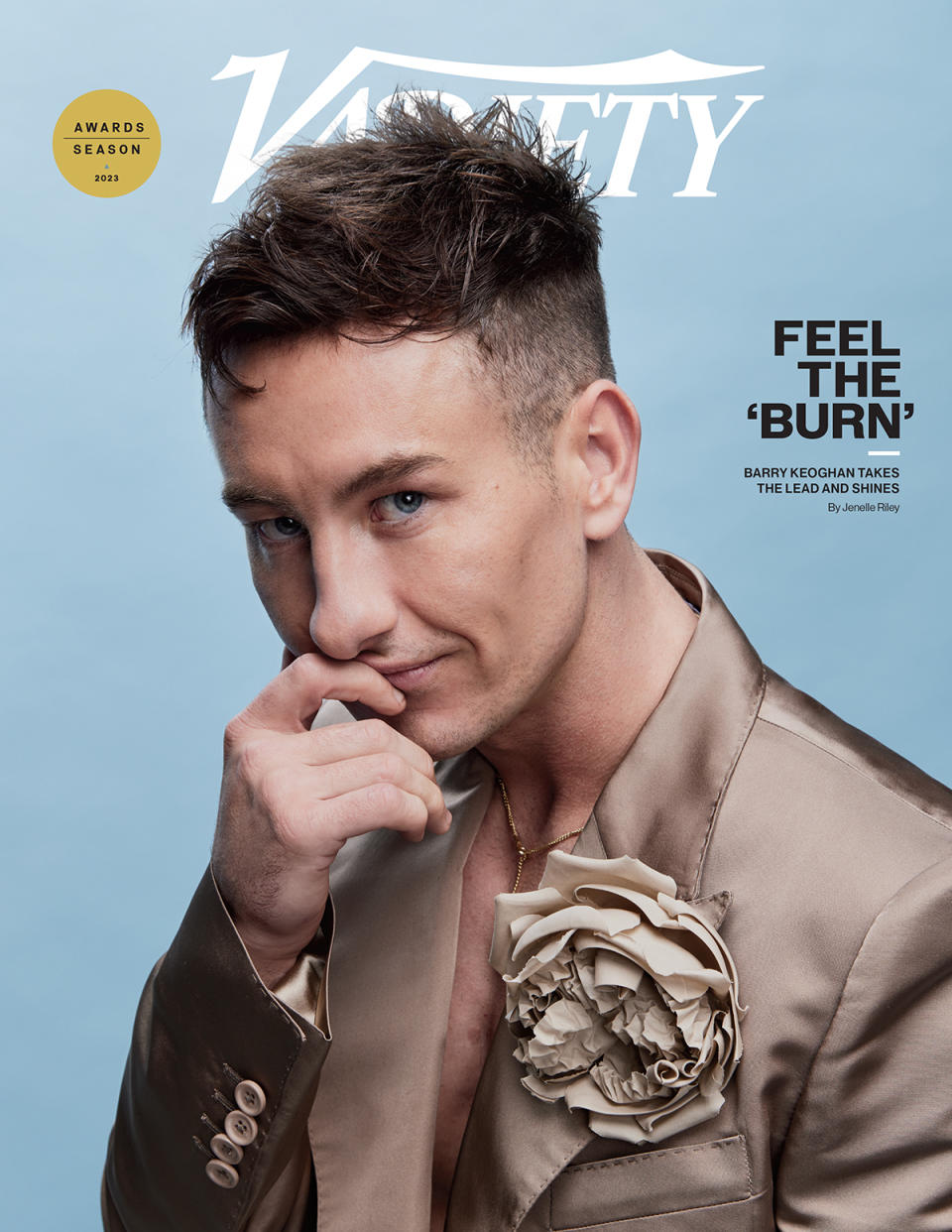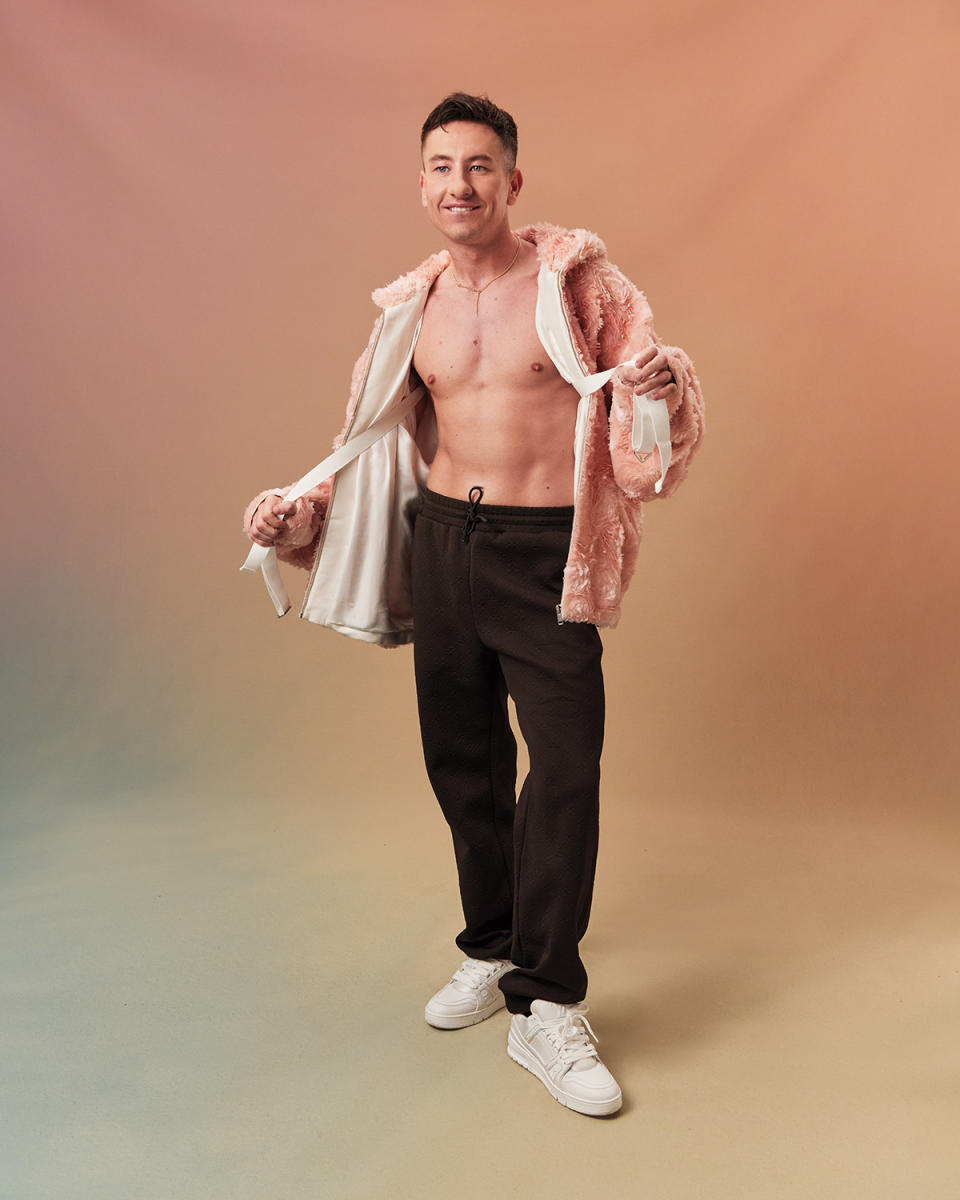Barry Keoghan Sounds Off on ‘Saltburn’s’ Most Shocking Scenes and Rooting for Oliver Through His ‘Fecked Up’ Obsession

Despite having played a wide variety of roles, Barry Keoghan is never seen acting.
The 31-year-old native of Summerhill, Ireland, slips so seamlessly into his characters, it’s easy to forget you’re watching a performance. And it’s intended as a compliment — no matter how unsavory the character or fantastical the situation, Keoghan is always completely believable.
More from Variety
Take Yorgos Lanthimos’ 2017 film “The Killing of a Sacred Deer,” in which he portrayed Martin, a teenage boy who blames the death of his father on the doctor played by Colin Farrell. He calmly informs the physician that he must pick someone in his family to kill or they will all die. Martin isn’t threatening to hurt anyone — he’s simply laying out the “rules” and he is powerless to stop them. The very premise hinges on Keoghan’s assured, complicated performance. At the time, the actor told Variety: “Everyone seems to hate me or think I’m evil. I guess that means I did my job.”

But Keoghan is also capable of making us love characters on the fringes of society; the same year as “Sacred Deer,” he played a tragic figure in Christopher Nolan’s “Dunkirk.” And in Martin McDonagh’s “The Banshees of Inisherin,” he brought great humanity to the role of Dominic, a good-hearted young man who is mostly shunned by his village. Dominic serves to make the film’s central protagonist, Padraic (Farrell, again), feel better about himself — no matter how dull he may be, at least he’s better off than his friend. The heartfelt performance earned Keoghan a BAFTA Award and brought the actor his first Academy Award nomination.
This ability to terrify or endear us as periphery characters is part of what made Keoghan the perfect choice to cameo as the Joker in 2022’s “The Batman” (a film that also featured Farrell — a pattern is emerging) and it’s a tease that opens up all sorts of possibilities. It is also what serves him well in “Saltburn,” his first leading film role. (Warning: Spoilers to follow!)
Already in theaters and hitting Amazon Prime Video on Dec. 22, “Saltburn” is Emerald Fennell’s buzzy follow-up to “Promising Young Woman,” which netted her an Academy Award for original screenplay. Keoghan plays Oliver Quick, a student at Oxford from a humble background who becomes obsessed with his charismatic classmate, Felix Catton (Jacob Elordi). Oliver soon integrates himself into the wealthy Catton family, which includes parents Sir James and Lady Elspeth (Richard E. Grant and Rosamund Pike) and Felix’s sister, Venetia (Alison Oliver). When Oliver comes to stay at Saltburn, their luxurious estate, all are quite taken by their latest charity case, with the exception of Felix’s American cousin Farleigh (Archie Madewke.).
In exploring class warfare, the film revels in indulgence and obsession. And Keoghan holds nothing back — odds are you’ve heard about the scenes where he sips Felix’s bath water, humps a gravesite or dances naked through the mansion. You never know what to expect next from his fearless turn. But his performance does have one thing in common with Keoghan’s previous work: you can’t take your eyes off him.
Despite Oliver’s actions, I found myself quite sympathetic to him at times. Is that the response you seem to be getting — that people are rooting for him?
They do! It’s kind of like that character Dexter, isn’t it? I know Emerald really roots for him and I was rooting for him. All the choices I made as Oliver, I didn’t seem them as sociopathic or wrong. Maybe that’s so I can justify a way of doing them. It’s when you step back as an audience member and go, “Okay, he probably is fecked up in the head.” But a genius!
It’s interesting because I would use the term sociopathic as well, but he does seem to care and have real feelings.
He definitely has compassion. He’s an addict — he’s slightly addicted, slightly obsessed. He’s an observer. He’s fascinated by human behavior and morals and why people act certain ways. He’s curious why people are so attracted to Felix. I don’t even think he wants to become him — if he had that, he wouldn’t know what to do with it. But he’s investigating. What is it that’s drawn all these people to him? We all have that person in our life. I remember being in school — there were one or two figures I’d watch in the schoolyard and people would gravitate to them. I’d wonder: What is it? Is it their smell? Is it that they’re not even saying anything? But then you try to replicate it and you just look weird and stupid.

I go back and forth on him because sometimes he’s very charismatic and charming. Other times, it seems like he’s not doing anything and people are just projecting qualities on him.
He has a different version of himself for everyone, as we all do. With Farleigh, he sees someone who can see inside of him and knows his true colors, so he kind of stays away from him. With Felix, it’s the bright-eyed, “I love you” relationship. With Elspeth, he’s an innocent mommy’s boy. He knows how to play them all.
You’ve talked about how you played five versions of Oliver. Did you name them? So if somebody said, “I need Oliver 2 here,” you knew how to play the scene?
That was more for me. I looked at good leading performances with a strong arc to prepare because this was my first leading part. Writing and directing are obviously huge, but it’s also up to you to keep the audience engaged. I created Oliver 1 for the start, then Oliver 2 for the next part, on through Oliver 5 at the end. I wanted to hit each of them with a physicality, a tone of voice, a different motive, a different pace. You see the costume and the hair changes, but you also sense his mental change and track that journey.
Then it was chronological? It wasn’t like he turns into Oliver 3 when Felix is around then goes back to Oliver 2 with Farleigh?
No, it was for the story. It helped with where I was in the story since it’s not shot chronologically. I was shooting, say, Scene 54; I would go to my book and see that this is Oliver 4. Then I would look up what Oliver 4’s traits are. What is his physicality? What is his demeanor?
And I’m assuming you would play several different Olivers in one day?
Yeah. It really helped me. I’ve not done that before. I like to say I’m method, but I think method is your own thing — you do what works for you. You can take from other methods, you can watch others and observe — you do what gets you by. You’re giving a lot. You can lose a little bit of yourself when you show raw emotion. You can take bits away from yourself that you haven’t even discovered yet. I’m not going to say it’s a painful process, but it’s a very exhausting process.
Sometimes the term “method acting” gets a bad rap — people think it means you want others to refer to you as the character’s name. But it’s whatever works for people.
It is. It’s art, at the end of the day. That’s why I don’t jump on everything that comes my way because it’s a big decision. It’s a big choice to go to a place that’s almost like scratching yourself. It’s exhausting. I’m going back to memories I don’t want to touch on. And it can really affect you. It’s a commitment.
“Saltburn” is full of scenes that people can’t stop talking about. Looking at the script, did some of the wilder moments intimidate or excite you as an actor? Like the ending dance scene, for example.
I looked at that and went, “I’m going to show some maturity here and my commitment to my craft and challenge myself.” I’ll do anything once that moves the story forward and if there’s a right reason for it creatively. I’m not going to do something because it’s out there or for the “wow” factor. And when this came up, I was totally up for it. Because it felt right for Oliver. Now, were there discussions about it? Yeah, of course. Because I want to know motives and objectives.
Take the bath scene. Yeah, it’s disgusting. But when you get into it, it’s a different level of obsession this boy has. That’s why I made the choice to rub my face along the plug hole and not slurp it straight away — because I’m trying to take it to a new level. Oliver doesn’t even know what he’s doing; he’s confused. He’s thinking, “I just want to be part of it. I want it to be on me. I want it to be me.” I was discovering that with the character, as well.
And Emerald is so good about creating that safe environment. Even the grave scene, I was like, “Can I have a closed set? I’d like to try something.” On paper, he wasn’t written to do that. But I wanted to see what actually happened, where I would take it. I wanted to be confused and let my body lead the way. What am I doing? How can I get closer? It’s trying to find that new level of obsession. Trying to level up on the obsession. It’s quite sad because he didn’t even know what to do. He’s a lost boy who’s confused and doesn’t know what he’s chasing. And he never gets the fulfillment of what he’s chasing.
The last few years have been a real whirlwind for you. How do you keep yourself balanced with a strong sense of self?
Structure is the main thing — structure and routine. For me, it’s boxing. It gives me a level of discipline, timing and simplicity. And make your bed in the morning. Even when I’m at a hotel, I make my bed. Because you forget to do these things when you’re being looked after. It’s the simple things that bring you back to the ground. So I make my bed every morning. I work on my boxing. I try to be on time. It’s the simple stuff like that. I don’t like to look at this like work because I love doing what I do. It’s not something I have to do. But when you can get so immersed in it you can lose yourself. So you have to keep things separate. Even the painter has to put down his brush and go to bed, doesn’t he?
It sounds like you’ve developed a process that works for you. Does it continue to change and develop?
Sure, I also learn from others, both older and younger. I love watching what people bring to the table and why they make their choices and get into character. For me, I’ll play around with plastic spoons in my mouth. I’ll keep an accent. I’ll listen to music. I’ll stay in a dress code. That’s all so I’m mentally in it. I had no formal training and I don’t think there is any right way to do what you do. To go back to the painting metaphor, there is no one correct way to paint — you just have to get it on the canvas.
Best of Variety
Sign up for Variety’s Newsletter. For the latest news, follow us on Facebook, Twitter, and Instagram.
